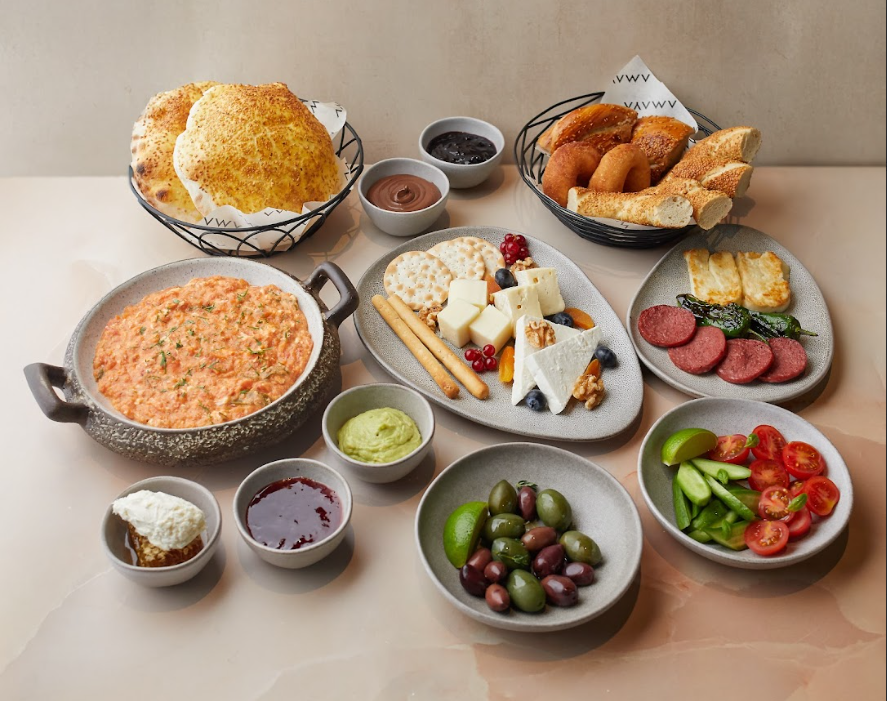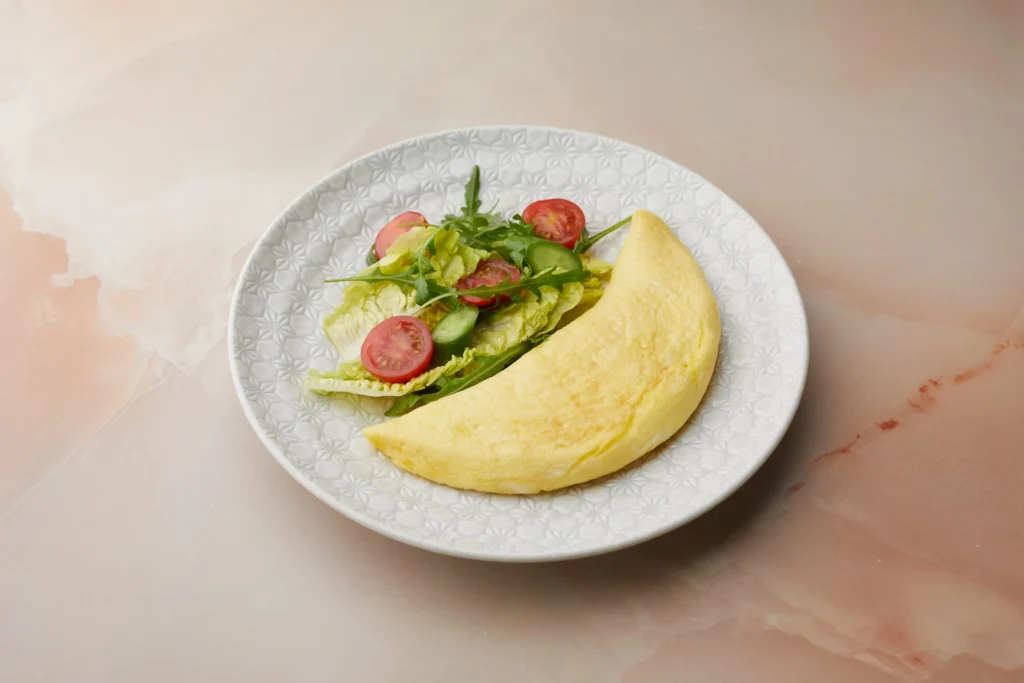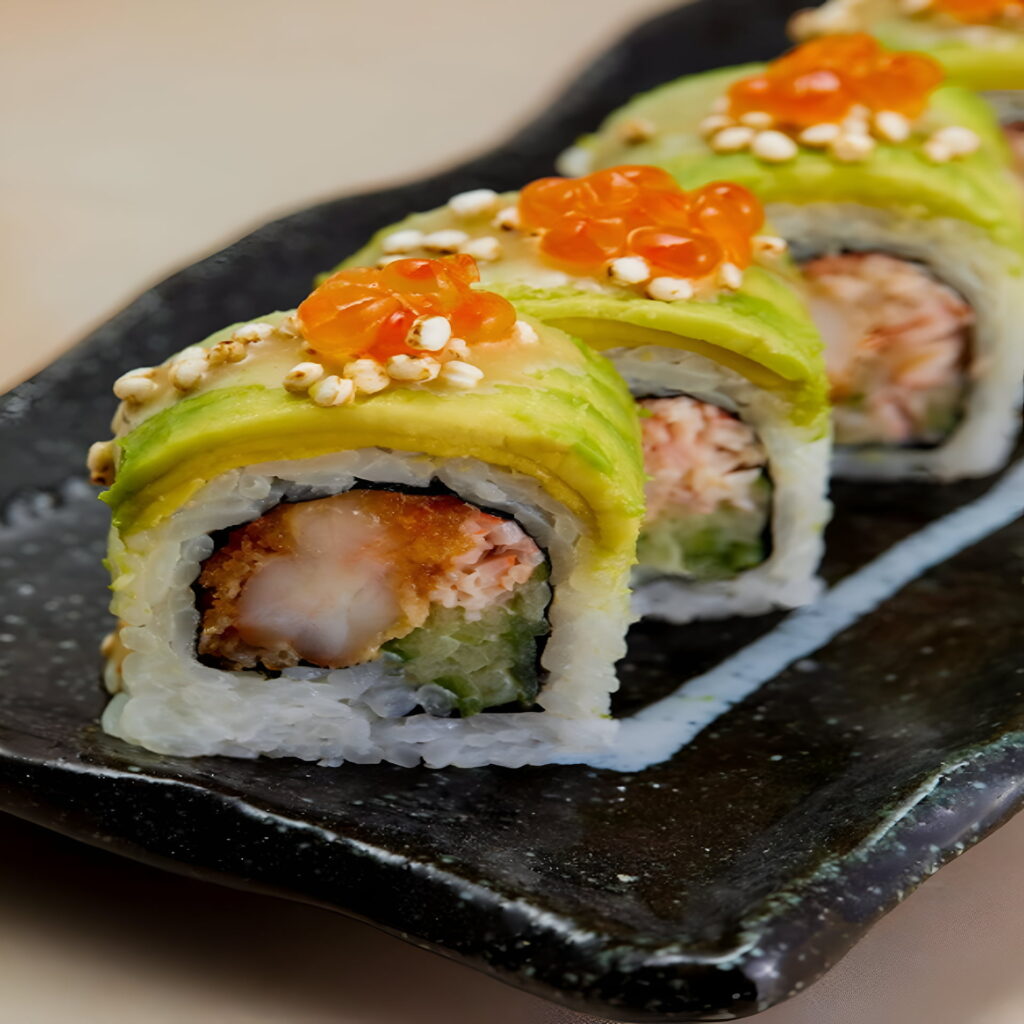What will land on your plate a year from now, and how will it taste, look, and even sound?
The conversation around food trends 2025 is louder than ever, with chefs, farmers, and technologists racing to satisfy diners who want meals that are delicious, responsible, and fun. At Amaya, we track every food trend that bubbles up, from Dubai’s bustling souks to global research labs, so guests can sample tomorrow’s flavors today.
Here is our insider look at the movements most likely to shape the latest food trends worldwide and the specific innovations already changing food trends UAE diners will notice first.
Plant-Based Proteins Level Up
Plant-based meat is no longer a novelty; it is fast becoming a staple. By 2025, expect steaks grown from pea protein, mushroom “scallops,” and algae-rich cheeses that rival dairy for creaminess. Recent analyses show companies using fermentation and extrusion to mimic the complex bite of animal tissue, drawing both vegans and curious carnivores.
In the UAE, menus are pairing these new textures with regional spices, meeting demand among health-minded locals seeking protein without the carbon footprint. This single trend in food promises to shrink supply chains and redefine luxury dining. In addition, you must try the must-try dishes in Dubai.
Fermentation Expands Beyond Kombucha
Fermentation will stretch past kimchi and kombucha into fine-dining sauces, plant-based charcuterie, and even cocktail foams. Food scientists point to the microbiome benefits of fermented fiber, while chefs love the natural umami it brings to vegetables.
Reports predicting the latest food trends list koji-aged carrots, barley miso glazes, and fermented nut “brie” as breakout stars of 2025. Expect Amaya’s kitchen to showcase these flavors in small-batch condiments that elevate familiar dishes without overwhelming the palate.
Zero-Waste Dining Becomes the Norm
Cutting waste is no longer a marketing perk; in 2025, it will be the ticket to operating. Dubai’s MICHELIN-recommended restaurants already repurpose stems, peels, and whey into elegant plates, and new UAE regulations will reward venues that divert organics from landfills.
At Amaya, citrus rinds become bitters for mocktails, spent coffee grounds enrich rooftop herb gardens, and guests see the cycle firsthand, an immersive reminder that sustainable choices can taste luxurious.
Hyper-Local Meets Hyper-Global
Consumers crave stories, both the heritage of a lentil grown two kilometers away and the thrill of a chili cultivated across an ocean. Chefs will respond by weaving Emirati desert tomatoes with Japanese yuzu or Ethiopian teff, crafting menus that feel at once rooted and exploratory. Analysts call this “glocal fusion,” a defining feature of food trends 2025, blurring borders while celebrating locality.
Functional Foods for Mind and Body
From saffron-infused broths that enhance mood to adaptogenic chocolate mousse easing stress, diners increasingly seek plates that serve a purpose beyond taste. Reports list turmeric peptides, mushroom nootropics, and probiotic-rich grains among ingredients set to dominate wellness-oriented menus.

UAE consumers, mindful of busy schedules and desert climates, welcome dishes promising hydration, immunity support, and mental clarity, ensuring this food trend gains even more traction here.
Tech-Enhanced Dining Takes the Stage
Artificial intelligence is entering the kitchen to predict purchasing, reduce spoilage, and suggest flavor pairings never tried before. Smart ovens read humidity to perfection-roast vegetables, while augmented-reality plating guides let diners assemble desserts in Dubai.
Industry observers say such experiences will anchor the best Dubai nightlife as much as music or décor once did. By 2025, guests at Amaya might view projected ingredient origins on the tabletop before lifting a fork.
Cultivated Seafood Surges Forward
Regulators recently approved lab-grown Coho salmon for American plates, signaling global momentum behind cell-based seafood. The technology addresses overfishing while delivering sashimi-grade texture free of microplastics or mercury.
GCC diners, already fond of premium raw fish, are poised to welcome these cuts, especially when paired with Emirati date-soy marinades that honor local flavors while showcasing cutting-edge protein.
Regenerative Agriculture Gains the Spotlight
Soil health is the unseen engine of delicious produce. Farmers embracing regenerative practices, crop rotation, cover cropping, and minimal tillage report higher nutrient density and more resilient harvests.
UAE vertical farms adopt similar closed-loop principles, using desert-cooled hydroponics to conserve water while feeding urban communities. As transparency apps trace every ingredient, diners will favor venues that support these systems, making regenerative sourcing a pivotal food trend for 2025.
Experiential Dining Deepens Connection
In 2025, meals will feel like narratives. Diners may stir a tableside clay pot to finish cooking pearl barley risotto or wear scent-diffusing bracelets that complement each course’s aroma.
Such multi-sensory touches create memories that outlast the menu and align with the growing demand for experiences over possessions. This evolution places restaurants such as Amaya, known for integrating fountain views, live music, and chef interactions, at the forefront of food trends that UAE visitors are eager to explore.
Middle-Eastern Superfoods Enter the Global Pantry
Ingredients long treasured in Gulf kitchens, such as sidr honey, black lime, and desert truffles, are stepping onto the international stage.
Researchers highlight their antioxidant richness, and global chefs crave new flavor notes. Expect these staples to appear in energy bars, fermented tonics, and fine-dining desserts worldwide. Their rise underscores how nightlife in Dubai often doubles as a tasting lab for tomorrow’s mainstream fare.
Conclusion
From plant-based steaks to zero-waste desserts, the food trends 2025 forecast promises a table full of bold ideas shaped by sustainability, technology, and cultural exchange. Amaya is committed to translating these movements into dishes that delight without complexity, making every visit a glimpse of the dining future.
To taste what’s next, reserve your table by emailing reservation@amayaintl.com, connect for events at info@amayaintl.com, or call us on +971 4 587 1000; we look forward to welcoming you soon.
FAQs
1. How will food delivery platforms adapt to the 2025 landscape, and what changes should diners expect in convenience and packaging?
Experts predict that delivery services will shift to reusable container loops collected at the doorstep, integrate AI routing for minute-level accuracy, and partner with local farms to cut travel distance. Diners can therefore expect hotter meals, less waste, and real-time nutrition data displayed on their phones, bringing the restaurant quality of Amaya even closer to home.
2. Are microalgae and insect proteins part of mainstream food trends 2025, or will they remain niche ingredients?
Cultivation costs are falling rapidly, and flavor engineering is making microalgae buttery and insect flours nearly neutral. Large bakeries already test cricket-blend bread for extra protein, while smoothie brands use spirulina for color without additives. Although adoption will vary by culture, analysts anticipate these proteins will occupy a visible, if specialty, aisle section within two years.
3. What role will blockchain play in ensuring ingredient transparency, and how might that influence diner trust?
Blockchain lets every actor in the supply chain, from farmer to chef, log immutable data on origin, storage, and environmental impact. Diners scanning a QR code can verify fair-trade cacao or the carbon footprint of a tomato. As trust grows, restaurants practicing full transparency, like Amaya’s planned sourcing dashboard, are expected to see stronger loyalty and word-of-mouth referrals.
4. How is climate change shaping beverage innovation alongside the food trend shifts discussed?
Erratic harvests are pushing growers toward drought-resistant grape varietals and heat-tolerant coffee species, while mixologists craft cocktails from resilient botanicals such as prickly pear and moringa. Carbon-capturing sparkling waters and solar-brewed teas add sustainability credentials. These beverages complement the bold flavors of emerging cuisine, completing an eco-minded dining narrative.
5. Will robotics replace human chefs, or will technology mainly augment creativity in kitchens by 2025?
Industry consensus leans toward collaboration rather than replacement. Robots can fillet fish with micron precision or plate symmetrical garnishes, freeing chefs to refocus on storytelling, seasoning balance, and guest engagement. Diners at forward-thinking venues will thus experience both the efficiency of automation and the warmth of human hospitality, each enhancing the other rather than competing.







